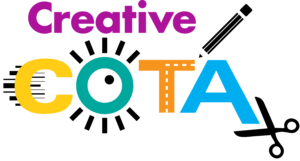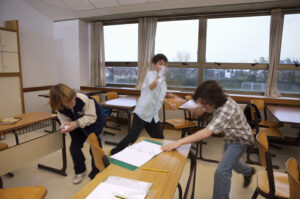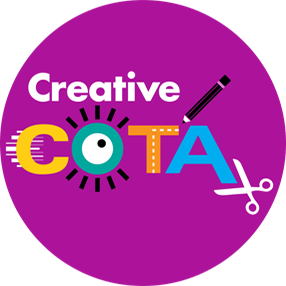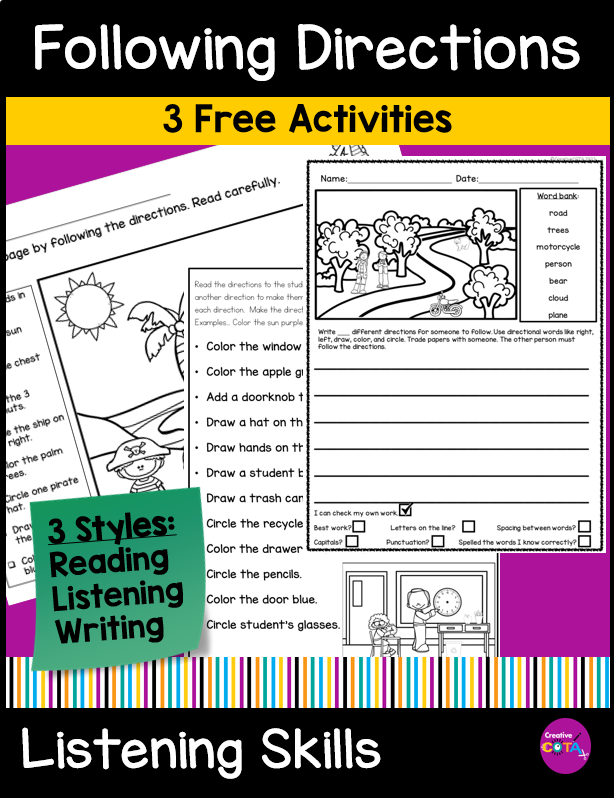
Creative writing is an important part of elementary education. It helps students build their imagination, improve language skills, and develop critical thinking. But did you know that creative writing can also support handwriting development? Integrating creative writing with occupational therapy (OT) can be an effective way to help students grow in multiple areas. Here’s why creative writing matters and how using specific resources can support students both in the classroom and in OT sessions.
Why Creative Writing is Important for Elementary Students
Creative writing provides students with numerous benefits:
- Improves Language and Vocabulary: Writing stories introduces new words and helps students understand how to use them in context.
- Boosts Critical Thinking: Writing stories helps children organize their thoughts, plan a plot, and make connections between ideas, improving problem-solving skills.
- Encourages Creativity: Students use their imagination to create stories, which boosts confidence and motivation.
- Strengthens Communication: Writing helps students learn to express their ideas clearly, an important skill for both school and everyday life.
- Provides a Way to Express Themselves: Creative writing allows students to share their thoughts and feelings in a structured way.
Handwriting in Occupational Therapy
Handwriting is an essential skill that can impact how well students do in school. For some students, developing this skill can be difficult. OT helps by focusing on activities that improve hand strength, grip, and coordination. Combining handwriting practice with creative writing can make OT sessions more engaging and productive. This helps students work on their fine motor skills while also practicing writing in a fun way.
How Creative Writing Resources Can Help
Using specific resources like my Narrative Writing Prompts Story Starters with Pictures Activity can support writing and occupational therapy goals. Here’s how:
- Handwriting Practice: Worksheets that include spaces for drawing and writing keywords can help students practice forming letters and words.
- Visual Perception: The colorful story prompts capture students’ attention and encourage them to create stories based on what they see. Drawing their own illustrations or using small toys or mini erasers can support fine motor skills.
- Storytelling and Language Development: The prompts help students build sentences and organize their thoughts, which supports writing skills and vocabulary.
- Flexible and Low-Prep: These resources are easy to use in the classroom or OT sessions. Laminating the prompts allows them to be used throughout the year, and storing them in a pencil box keeps everything organized.
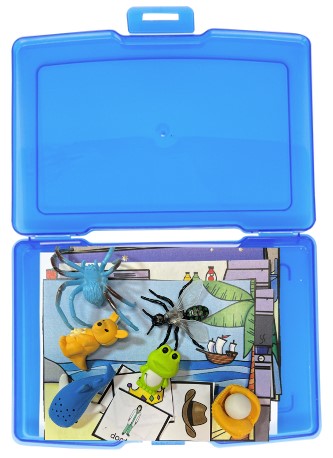
Alternative Writing Tools
Not every student benefits from using a pencil or pen. Some may find it easier to express themselves with different tools:
- Keyboarding: Typing can be an effective alternative for students who struggle with handwriting. It allows them to focus on their writing without worrying about forming letters.
- Voice-to-Text: Apps that convert speech into text can help students share their ideas without the physical act of writing. This can be helpful for students with fine motor challenges.
- Storytelling Apps: Apps like Book Creator let students add images, audio, or video to their stories. This makes writing more interactive and can support both writing and digital skills.
Tall Tales: A Fun Way to Boost Imagination
Tall Tales is a storytelling game that helps students develop creative thinking and speaking skills. With 50 detailed game pieces, 24 full-color story cards, and a story bag, players draw random pieces and use them to create stories. It’s a great way for kids to practice storytelling in a relaxed, non-competitive way.
5 Ways to Play Tall Tales:
- Basic Game: One player draws several story pieces and creates a story using them all. The story can be as creative as they want. After one round, the pieces go back in the bag for the next player.
- World Tales: Players draw a story place card after selecting several story pieces. The place card sets the environment for the story.
- Group Tales: Each player draws 2 or more pieces, and the group creates a story by taking turns adding their pieces.
- Marathon Tales: Players use all 50 pieces in the story bag to create a long, collaborative story.
Tall Tales can be used in classrooms and OT sessions to encourage creativity, collaboration, and communication.
Using Creative Writing in OT Sessions
Here are some ways to use creative writing during OT:
- Storytelling with Mini Erasers: Have students use mini erasers or small toys to create characters and scenes for their stories. They can draw and write about their story ideas, which supports fine motor skills and handwriting.
- Drawing and Writing: Students can draw pictures based on story prompts and write sentences about them. This practice helps with hand strength and coordination.
- Typing Practice: Use story prompts for keyboarding practice to help students work on typing speed and accuracy.
- Voice-to-Text: Let students use voice-to-text apps to dictate their stories. This can be a good way for students with fine motor difficulties to focus on their ideas.
- Interactive Apps: Apps like Book Creator can be used for digital storytelling, adding images and audio to make the writing process more dynamic.
- Games like Tall Tales: Use the game for group storytelling activities to build creativity, cooperation, and communication skills.
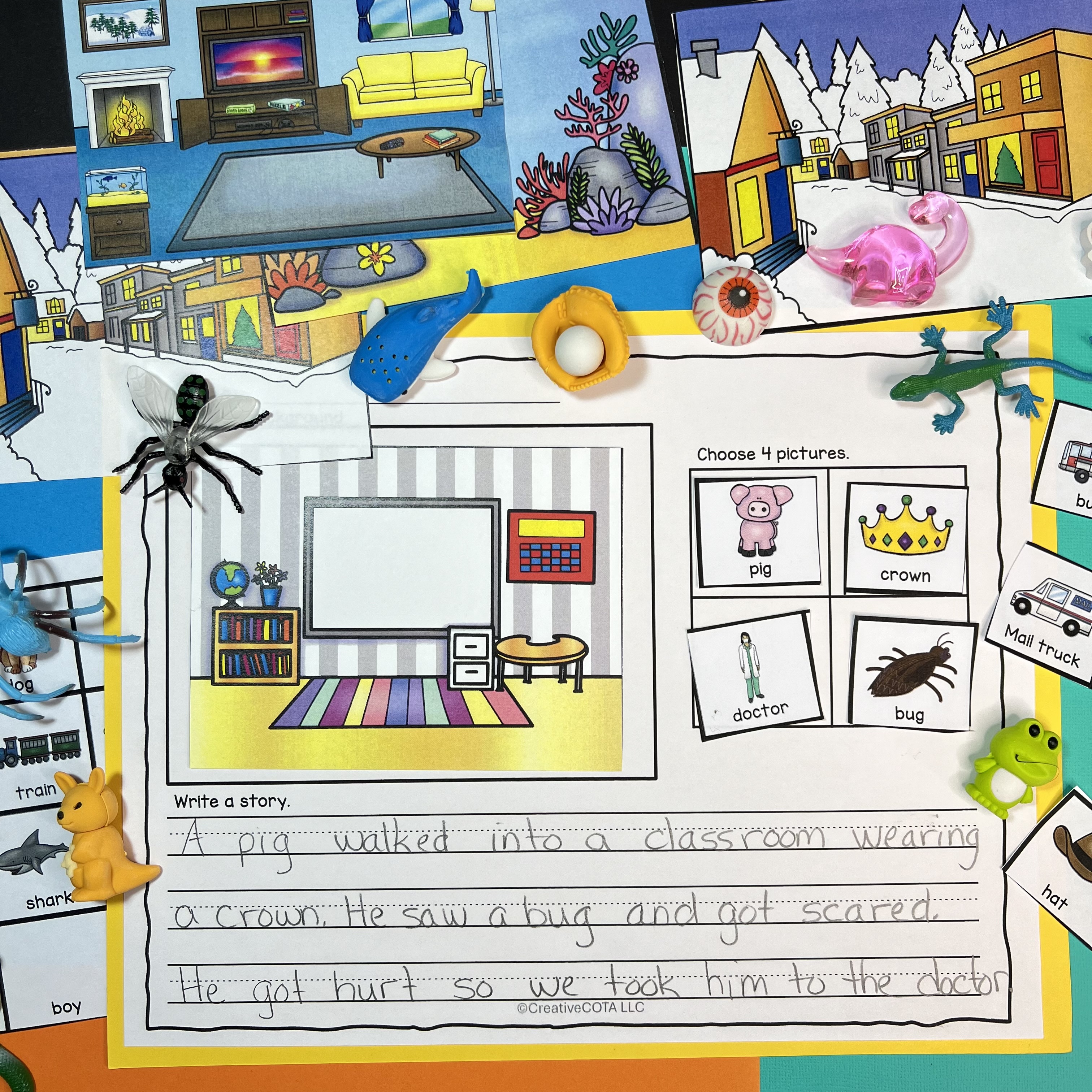
Conclusion
Creative writing is more than just an enjoyable activity. It helps students develop language, cognitive, and communication skills. When paired with OT activities, it supports handwriting and fine motor development. Using resources like Narrative Writing Prompts Story Starters with Pictures Activity makes learning engaging and accessible. Alternative writing tools such as keyboarding, voice-to-text, and storytelling apps provide even more options for students to share their ideas. Games like Tall Tales can also encourage imaginative thinking and storytelling in a fun way. Supporting creative writing in elementary students helps them build confidence, communication skills, and a love for learning that will last a lifetime.
(This post contains affiliate links. If you use a link and make a purchase, I will receive a small commission at no cost to you.)
About the Author
I am a Certified Occupational Therapy Assistant (COTA) and have been working in a public school system for more than 25 years. My resources can be found on TPT, BOOM Learning, Made by Teachers, Classful, and Your Therapy Source. I appreciate your interest wherever you wish to shop.
My mission is to help you find creative ideas to incorporate fine motor, visual perception, gross motor, and social-emotional learning into your lessons.
I hope you consider signing up for my Free Resource Library with your Email. I send out emails about once a week and share resources, tips, and planning ideas for your classroom or occupational therapy needs. Hopefully, these help your students work on building their skills in a fun and engaging way.
Thank you for your interest in my resources and ideas. I hope you will consider following my journey on TPT or wherever you wish to shop.

